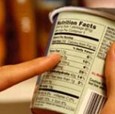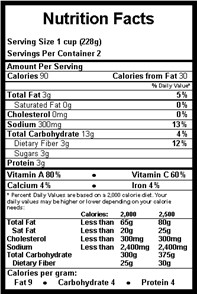Diet, Weight Lost & Activity
Making changes to your diet is a proven way to help control high blood pressure. These changes can also help you to lose weight and lower your chance of heart disease and stroke.
Your provider can refer you to a dietician who can help you create a healthy meal plan.
What can you do?
- Eat a heart healthy diet like the DASH Eating Plan
- Limit salty and processed foods and eating out
- Participate in daily exercise and maintain a healthy weight
- See a dietitian to learn more about eating heart-healthy meals
The DASH Eating Plan
The low salt Dietary Approaches to Stop Hypertension (DASH) eating plan is proven to lower blood pressure. The DASH eating plan focuses on fruits and vegetables, fat-free and low-fat dairy products. It includes whole grains, beans, fish, poultry, seeds, nuts and vegetable oils. It limits sodium, sweets, sugary beverages and red meats. The DASH eating plan is low in saturated and trans fats that are not good for your heart. It is rich in potassium, magnesium, fiber and protein. More information about the DASH eating plan is available at: https://www.nhlbi.nih.gov/health-topics/dash-eating-plan.
Speak with your provider about the DASH eating plan if you have chronic kidney disease because the DASH eating plan may not be appropriate for you.
| Type of Fat | Included in the DASH plan? |
| Unsaturated fats | Yes |
| Omega 3 fatty acids | Yes |
| Saturated fats | No |
| Trans fats | No |
Limiting salt (sodium) in your diet
 Salt (sodium chloride) is about 40% sodium. Eat less sodium to lower blood pressure. Eating too much sodium is a big cause of high blood pressure. The more sodium you eat, the higher your blood pressure will be.
Salt (sodium chloride) is about 40% sodium. Eat less sodium to lower blood pressure. Eating too much sodium is a big cause of high blood pressure. The more sodium you eat, the higher your blood pressure will be.
How does sodium affect your heart and kidneys?
 Where sodium goes, water goes. When you eat salty foods, the sodium goes into your blood stream and water follows it. You may notice swelling in your hands, feet or face. This extra water raises the volume of your blood and causes your blood pressure to rise. Then your heart has to work harder to pump the extra amount of blood through your blood vessels. If your blood pressure is high, it can cause damage to your kidneys and heart.
Where sodium goes, water goes. When you eat salty foods, the sodium goes into your blood stream and water follows it. You may notice swelling in your hands, feet or face. This extra water raises the volume of your blood and causes your blood pressure to rise. Then your heart has to work harder to pump the extra amount of blood through your blood vessels. If your blood pressure is high, it can cause damage to your kidneys and heart.
How to Read a Food Label for Salt Content
Packaged foods have a label that tells you the amount of sodium per serving in that food.
Look for the serving size at the top of the label. 

Then, look for the amount of sodium in that serving of the food in the middle of the label. 
If the food contains more than 200 mg of sodium, you should decrease the size of the serving or find a substitute for that food.
Low Sodium Guidelines
Sodium is found in many foods, especially in canned and processed foods. Decreasing the amount of sodium you eat will help keep extra fluid out of your body and your blood pressure from being too high. Not eating a large amount of sodium at one time will also help.
Experts disagree on the right amount of sodium in the diet, but a reasonable goal for most people with hypertension is to limit sodium intake to less than 2400 milligrams (mg) per day. An example of how to divide up sodium intake in one day is below:
- 700 mg per meal (3 meals per day)
- 200 mg per snack (1 snack per day)

Planning ahead, preparing most meals at home from fresh ingredients, reading food labels and eating balanced meals will help keep your sodium intake lower.
Most sodium comes from salt. Keep in mind that most of this salt is already added to prepared foods. Here are some ways to reduce the sodium in your diet:
Avoid Table Salt
1 teaspoon of table salt = 2300 mg sodium< This is almost the total amount you should have for the entire day!
Avoid Processed Foods
Examples include canned foods, frozen meals, snack foods, “instant” foods, packaged meals, most cheeses, deli meats, canned meats, pickles and pickled foods, cured or smoked meats, and pre-packaged ready-to-eat and boxed dishes. Some processed foods say “low sodium” or “low salt,” but may still have too much sodium. CHECK THE LABEL!
Avoid Sauces and Seasonings
Examples include bouillon cubes, broths, barbecue sauce, soy sauce, ketchup, and salad dressings. Some sauces and seasonings say “low sodium” or “low salt” but they may still have too much sodium. Be sure to check the label!
You can use salt substitutes. Some patients may need to limit how much they use salt substitutes because they contain potassium. If you have had problems with high potassium, you should not use salt substitutes. Ask your health care provider if you are not sure. Some examples of salt substitutes are McCormick® salt-free seasoning, Nu Salt®, and Morton’s Salt Substitute®. You can also use these herbs and spices in place of salt:
|
|
Helpful Tips
- Choose fresh or frozen vegetables (without sauces) and fruits
- Use “No Salt Added” canned vegetables
- Remember, many “low sodium” and “low salt” foods still have TOO MUCH SODIUM! (Read the label)
- When eating out, ask for your meal to be cooked without salt

- Request sauces and salad dressings to be “on the side” so that you can use less
- Limit condiments. (such as ketchup, mustard, mayo)
- Limit eating out to once per week
- Avoid packaged, processed, and pre-made foods
- Get rid of the salt shaker and seasonings that have sodium in them
Losing Weight
Maintaining a healthy weight is important for blood pressure control. Even a small weight loss of 10 pounds can help to decrease blood pressure in people who are overweight. Ask your health care provider what a healthy weight is for you.
Weight Loss Tips:
- Eat 4-5 small meals per day.
- Listen to your body. When you are full, stop eating.
- Drink plenty of calorie-free drinks (water, unsweetened tea or coffee). You may be thirsty, not hungry.
- Choose lean meats, low-fat dairy (milk, low-sodium cheese, and yogurt).
- Eat high fiber foods including vegetables, fruits, beans and whole grains.
- Cut back on sugar including juice, soda, and sweets such as cakes, cookies and candies.
- Limit the amount of alcohol (beer, wine, and liquor) that you drink.
- Eat in one place only, such as at the kitchen table. Don’t eat in the car, bedroom or while watching TV.
- Cook without adding fat (bake, broil, roast, boil). Use nonstick cooking sprays instead of butter or oil.
- Make half of your plate fruits and/or vegetables.
- Drink water while you cook and during meals.
- Use smaller plates, bowls, glasses, and serving spoons.
- Use measuring cups and spoons for proper portion control (see BELOW).
- Do not put serving dishes on the table. This will help you avoid a second portion.
- Make mealtime special by using pretty dishes, napkins, and glasses.
- Eat slowly. Put your fork down between bites. Cut your food one bite at a time.
- Enjoy fruit for dessert instead of cake, pie, or other sweets.
- Leave a few bites of each food on your plate.
- Remove your plate as soon as you have finished eating.
Talk with your health care provider about a healthy meal plan that is right for you!
Portion Control for Weight Loss
Portion size matters. Research has shown that people consistently eat more food when offered larger sized portions. Therefore, portion control is important when you are trying to lose weight and keep it off. When measuring portion size, you do not need to carry around measuring cups. Instead, use your hand as a guide!

For example, 1 portion of meat or fish is 3 ounces. Three ounces is about the size of the palm of your hand. Likewise, 1 portion of cheese is about the size of your thumb.
Your hand makes it easy for you to imagine healthy portion sizes!
Exercise
Adults need at least 150 minutes of physical activity every week (this means on average about 22 minutes every day). Physical activity increases strength and endurance, makes your heart, lungs and bones stronger, helps you think and concentrate better, and helps with mood and self-esteem. It also lowers the risk of diabetes, high blood pressure and weight gain.
Talk with your provider before starting a new exercise program.
How to be More Active
- Limit TV, video games, and computer time
- Be active with a friend or family member
- Change your activities to prevent boredom and burnout
- Schedule regular times for activities
- Have someone help keep you to your routine
- Use music during your activities
- Keep you walking shoes in your car or nearby at work
Suggested Activities
- Walking
- Biking
- Team sports
- Swimming
- Dancing
- Hiking
- Tennis
- Housework
Start out with small goals. You can begin with 20 minutes of exercise, 2 days per week, and then slowly increase the number of days per week and the length of time that you exercise. Be sure to warm up before you exercise and cool down after you exercise.
- Find a walking trail near you
- Check out activities at state parks
- Schedule time with friends and family members that involves physical activity
- Use a work-out video
“Cardio” = fast walking, swimming, biking, hiking, running, dancing. These exercises increase your heart rate, make you breathe deeply and use muscle groups.
Strength = weightlifting, resistance bands, and doing sit-ups. These exercises target muscles and help to build strength.
Start with 10 to 15 minutes per day and increase the time each week toward a goal of 30 to 60 minutes per day. Include both “cardio” and strength exercises in your fitness program.
The most important thing is to start moving more each day. Any increase in movement has positive health effects. The more the better.
